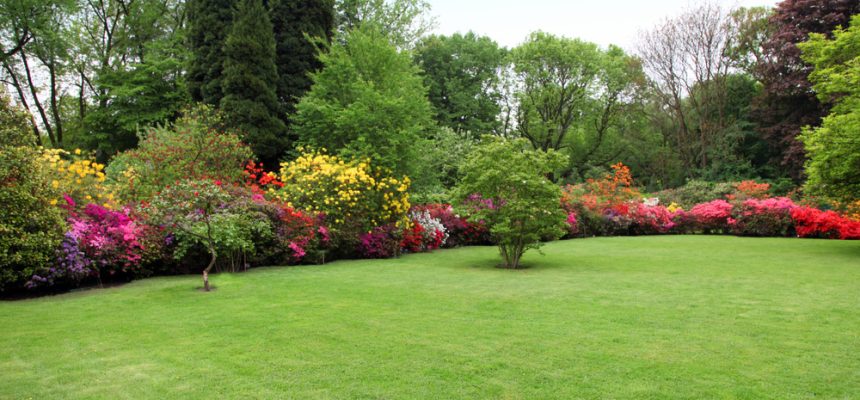Whether you’re landscaping a park, a field, or just your back garden, you may find yourself scratching your head, and wondering how to work around an existing tree or trees. When it comes to adding to, removing, or re-arranging the various aspects of your outdoor area, trees are one of the most difficult items to work with.
You may consider two main options – work around it or remove it – but these can be broken down into more possibilities, still. We take a closer look at the best ways to incorporate a tree or trees into your landscaping design plans to help you decide.
Add matching plants
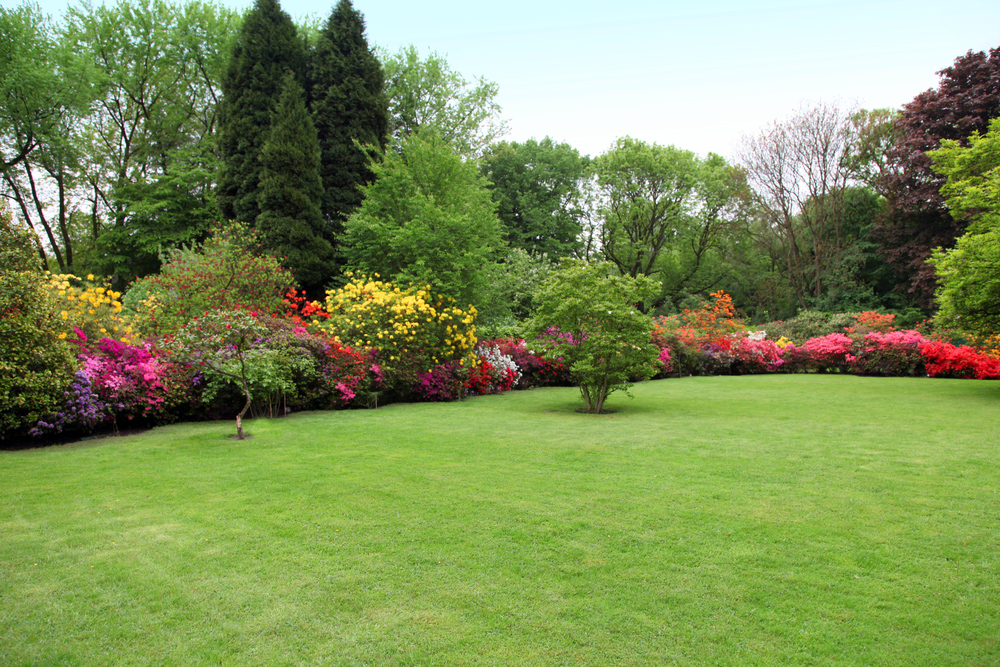
Adding plants or flowers to the base of your tree is a popular decorative solution, but you’ll first need to consider the type of tree when deciding how close to the base to plant. Trees such as oaks or pines may have deeper roots, which offer more soil space at the base for flowers, whereas smaller deciduous trees may have shallow roots making planting at the base more difficult. When it comes to the type of plants or flowers to add, consider the size and shape of the tree. Trees with higher boughs or a vase-like shape will suit adjacent perennials, whereas a low or weeping tree would suit smaller plants, for a sunny meadow effect. If in doubt, be sure to contact a professional landscaper, who’ll be able to offer further advice.
Create an ecosystem
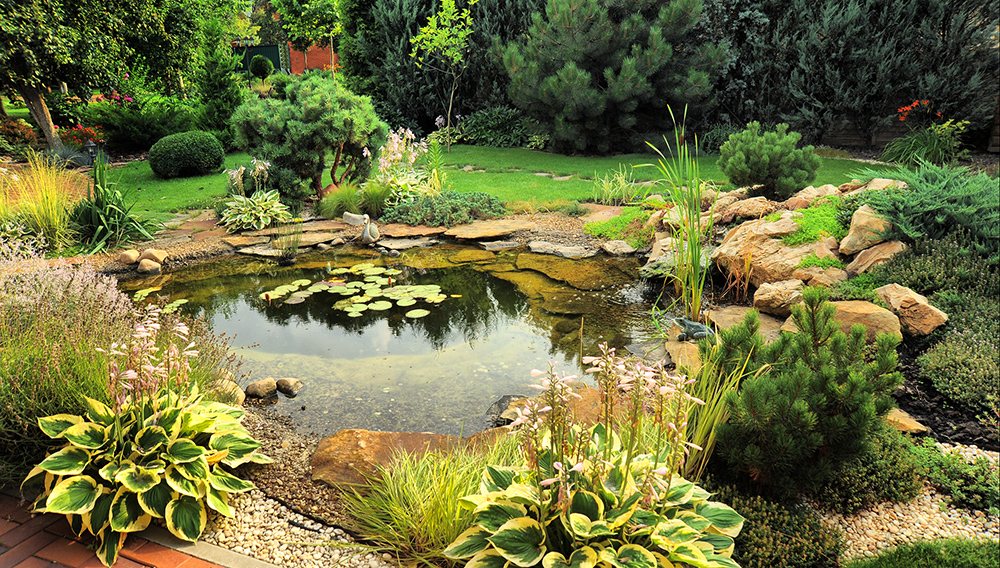
Trees are ideal for attracting wildlife to your garden or outdoor space, giving you the opportunity to view squirrels and birds at close range. To make your area into a true ecosystem, consider adding a small pond or lake too. Be sure to map your tree roots when planning proximity, as growing roots can cause costly damage if they push through the foundations or lining of your pond. Also, in autumn, it’s much easier to rake fallen leaves from the ground than try to fish them out of the water. With careful planning however, you can have a tranquil pond beneath the shade of a tree, encouraging animal visitors all year around, and providing a true serenity to your space.
Build around the tree
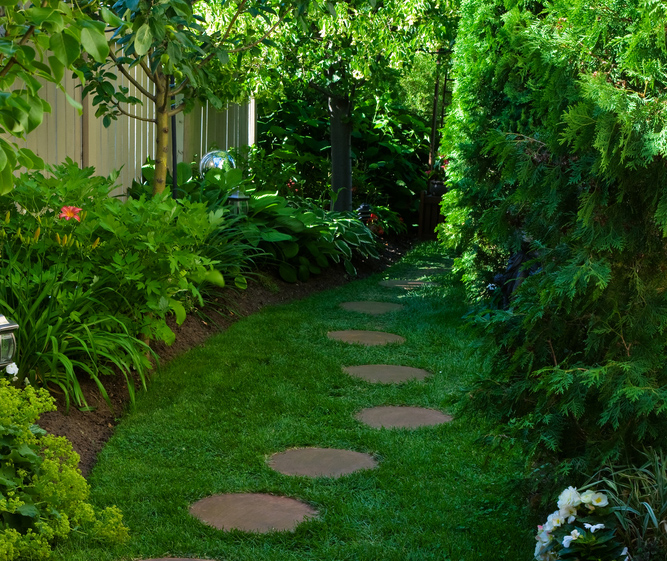
While trees can’t exactly be moved a little to the left, they can be incorporated into your plans by building around them. For example, a winding path which curls around a tree can have a charming cottage-esque aesthetic, or custom-built planting boxes can also be installed up to or around the trunk to great effect. Whether you’re looking to introduce decking, timberwork, or pathways, contacting a professional landscaper will mean you can arrange a bespoke plan to work around a tree or trees.
Removing trees/ tree stumps
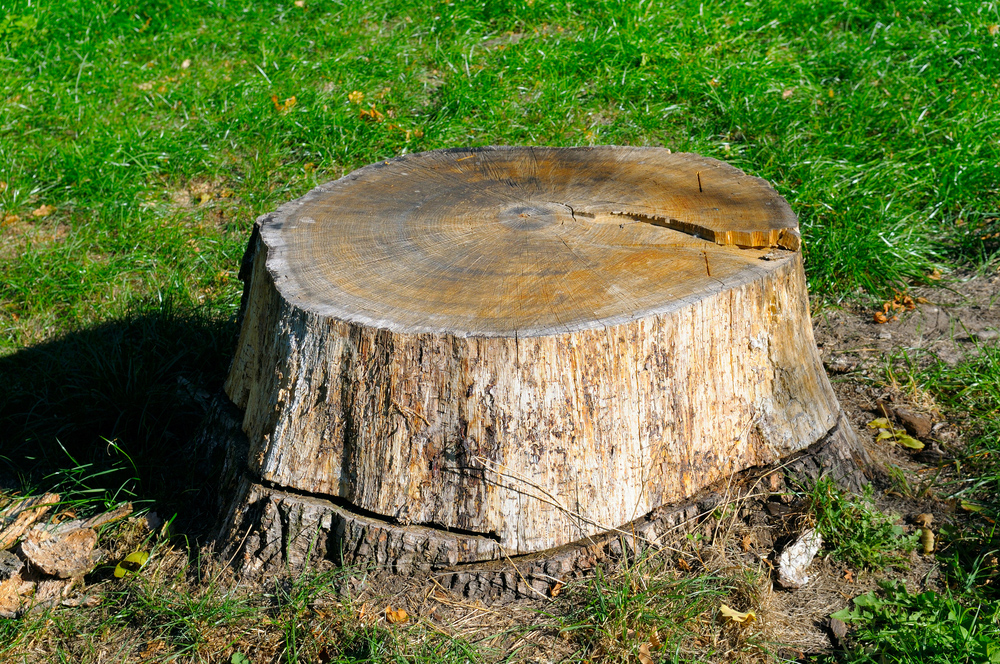
If a tree is well and truly in the way of your plans, or if it’s old and unsightly and you want it gone, the last resort is to remove it altogether. The first part of removal is to have the tree cut down – by chainsaw is usually the quickest and easiest method – which then leaves you with just the stump to dispose of. This can be difficult and dangerous work, and so it’s advisable to contact a trained landscaper to help. Removing a tree stump involves drilling a particular arrangement of holes into the stump, before pouring in specialist tree stump removal chemicals. The next step is to wait four-to-six weeks for the chemicals to take effect, making the stump soft and spongey, when it can be more easily cut and pulled from the earth.
If you have a landscaping project in mind, and you’re looking for professional and reliable assistance, be sure to contact Groby Landscapes. We offer a range of landscaping services, helping you transform your outdoor space completely. Our expert designers can also create bespoke plans, working to incorporate trees or other present features. For more information, contact us today.
See also: Garden trends for 2022
Posted in Landscaping, Landscaping Techniques, News
